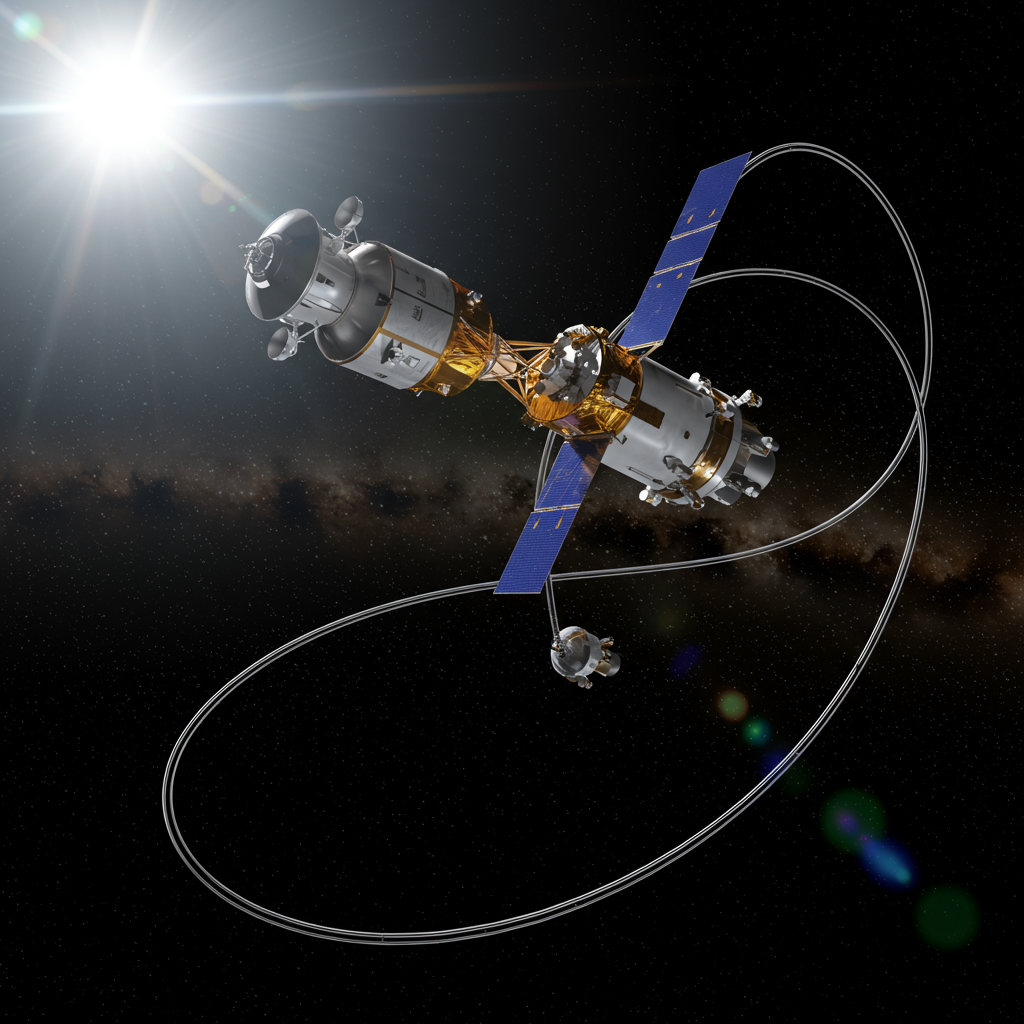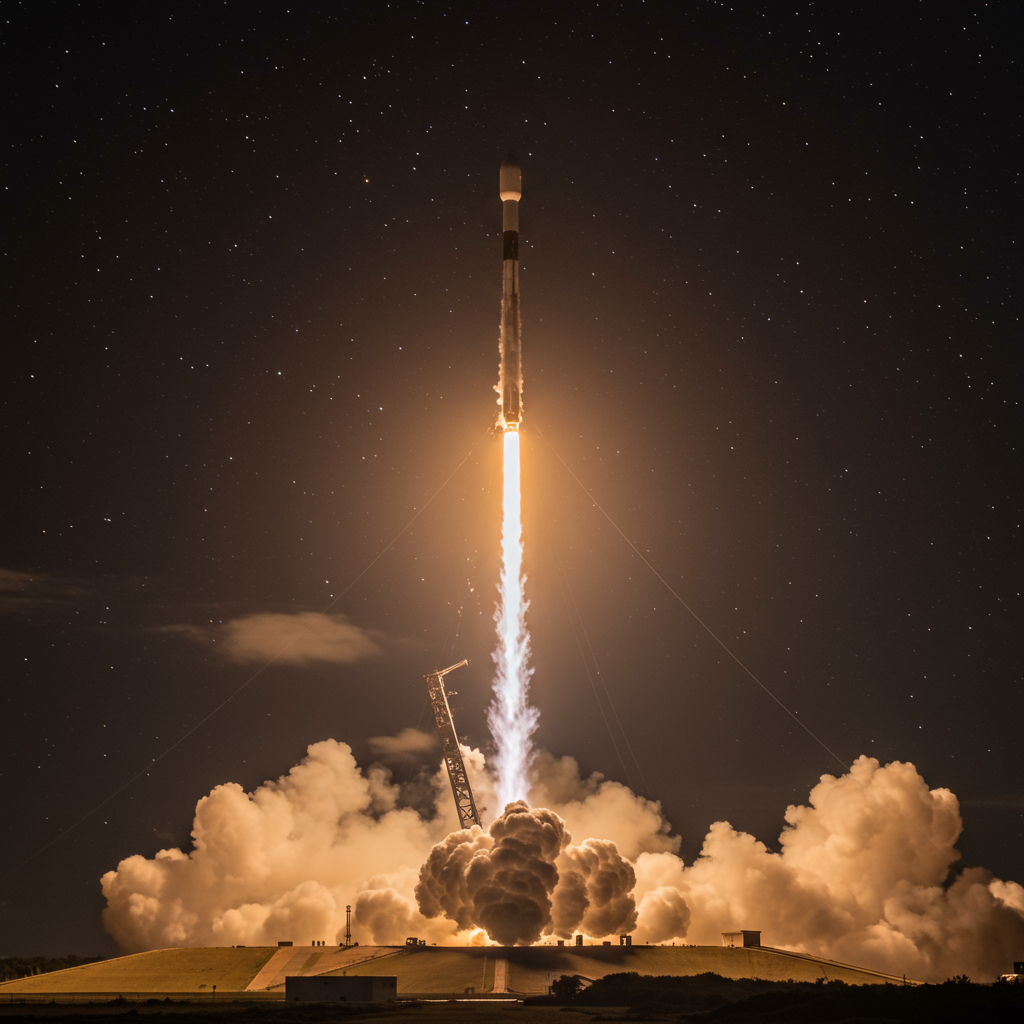NASA’s groundbreaking EscaPADE mission is charting an unprecedented course to Mars, undertaking a winding journey designed to unlock the secrets of the Red Planet’s lost atmosphere. This innovative, twin-orbiter mission aims to understand why Mars transformed from a potentially habitable world into the barren landscape we see today, all while demonstrating a revolutionary, cost-effective approach to deep space exploration. By leveraging a unique “launch-and-loiter” trajectory and significantly lower costs, EscaPADE is not just a scientific endeavor but also a crucial test case for the future flexibility and ambition of planetary science missions.
EscaPADE: A Bold New Era for Mars Exploration
At the heart of the EscaPADE mission (Escape and Plasma Acceleration Dynamics Explorers) lies a profound scientific question: What caused Mars to lose its dense atmosphere billions of years ago? Two identical spacecraft are poised to embark on an orbital path never before attempted, a testament to human ingenuity in space exploration. These twin orbiters, led by the University of California, Berkeley, and supported by aerospace companies like Advanced Space and Rocket Lab, will provide critical data on how the solar wind stripped away Mars’ protective atmospheric layers, a process vital for understanding planetary evolution across the cosmos.
Unraveling Mars’ Ancient Atmospheric Mystery
For decades, scientists have puzzled over the fate of Mars’ once-thicker atmosphere. Understanding this dramatic atmospheric loss is key to determining Mars’ past habitability and its potential to harbor life. EscaPADE’s twin spacecraft will specifically investigate the dynamics of Mars’ upper atmosphere and its interaction with the solar wind, mapping the planet’s magnetic fields and plasma environment. This crucial data will shed light on the physical processes that dictated Mars’ destiny, offering insights that could inform our search for life on exoplanets and shape our understanding of planetary habitability.
The SIMPLEx Program: High Value, Low Cost
EscaPADE is a flagship mission within NASA’s Small, Innovative Missions for Planetary Exploration (SIMPLEx) program. This initiative challenges researchers and private companies to develop high-impact science missions using smaller spacecraft and tighter budgets. With a total cost of less than $100 million, EscaPADE dramatically undercuts the typical price tag of $300 million to $600 million for other NASA Mars orbiters. As Jeff Parker, CTO of Colorado-based Advanced Space, aptly puts it, “We don’t use the word ‘cheap.’ We say, ‘high value.'” This philosophy is driving a new era where significant scientific discoveries can be achieved with greater efficiency, making space exploration more accessible and sustainable.
An Unprecedented Trajectory: The “Launch-and-Loiter” Approach
What makes EscaPADE truly revolutionary is its orbital strategy. Faced with a series of launch delays and mission plan changes, the orbiters found themselves without a ride during the traditional Mars transfer window in late 2024. Rather than waiting another 26 months for the next prime alignment, mission designers devised an ingenious workaround: the “launch-and-loiter” method.
Navigating Beyond the Traditional Transfer Window
Typically, spacecraft bound for Mars rely on precise planetary alignments—known as “transfer windows”—to take the most direct, fuel-efficient path. These opportunities are fleeting, lasting only a few weeks every couple of years. EscaPADE’s original design accounted for this direct route, but circumstances forced a creative pivot. The “launch-and-loiter” strategy allows the mission to launch virtually any day of any year, offering extraordinary flexibility. This innovation could transform mission planning, removing a significant hurdle for future deep space endeavors and making space access less time-constrained.
Destination: Lagrange Point 2 (L2)
After its initial liftoff, EscaPADE’s twin spacecraft will embark on an extraordinary detour. Instead of heading directly to Mars, they will journey into deep space toward Lagrange Point 2, or L2. Located approximately 1.5 million kilometers (930,000 miles) from Earth, L2 is a unique gravitational balance point where the pulls of the Sun and Earth perfectly counteract each other. This cosmic sweet spot allows spacecraft to “linger” in a stable position with minimal fuel consumption. The L2 point also offers a favorable radiation environment, protecting the delicate instruments during its year-long wait. The EscaPADE vehicles will loop endlessly in a distinctive kidney-bean-shaped orbit around L2 until November 2026, when they will briefly swing back around Earth to slingshot toward Mars, finally arriving in September 2027.
Paving the Way: Innovation and Future Missions
The EscaPADE mission is not only a scientific endeavor but also a technological showcase, pushing boundaries in multiple areas of space exploration.
Blue Origin’s New Glenn: A Maiden Voyage with Precious Cargo
The twin EscaPADE orbiters are secured within the nose cone of Blue Origin’s New Glenn rocket. This mission marks a significant milestone: it will be the first time this powerful new launch vehicle carries valuable cargo into space from Cape Canaveral Space Force Station in Florida. The launch, anticipated as soon as 2:45 p.m. ET Sunday, represents a crucial step in testing New Glenn’s capabilities and expanding launch options for NASA and other space agencies. While potential government shutdowns could affect launch schedules, efforts with the FAA aim to ensure its timely execution.
Complementing Groundbreaking Mars Science
EscaPADE’s orbital perspective will significantly enhance our understanding of Mars, complementing the invaluable work of surface missions like NASA’s Curiosity rover. The Curiosity rover, launched in 2011 and still actively exploring Mars, continues to deliver critical data on the planet’s geology, climate, and potential for past life. For example, the Mars Reconnaissance Orbiter (MRO) recently captured a rare mid-drive image of Curiosity, showcasing its winding 1,050-foot trail as it studies “boxwork” rock formations potentially shaped by ancient groundwater. While Curiosity uncovers the planet’s past on the surface, EscaPADE will focus on the present and future of Mars’ atmosphere from above, creating a holistic view of the Red Planet’s evolution. Together, these missions provide unprecedented detail, addressing the challenges of navigating Mars’ unpredictable surface and deepening humanity’s quest to understand the Martian environment.
Driving the Next Generation of Explorers
Missions like EscaPADE are laying the groundwork for more ambitious deep space exploration, including future human missions to Mars. NASA is actively preparing for this future, as evidenced by its 2025 astronaut class announcement. This all-American group of 10 individuals, selected from 8,000 applicants, marks a historic first with six women and four men. These “America’s best and brightest” include specialists ranging from mechanical engineers like Ben Bailey to geologists such as Lauren Edgar and even former orbital flyers like Anna Menon (who holds a new female altitude record). They are embarking on a rigorous two-year training program designed to prepare them for the International Space Station, Artemis missions to the Moon, and ultimately, crewed missions to Mars. Innovative, cost-effective robotic missions like EscaPADE are essential for gathering the necessary data and refining technologies that will ensure the success and safety of these future human endeavors.
Risks and Rewards: The Future of Planetary Science
The pioneering nature of EscaPADE’s mission comes with inherent risks, but these are calculated for the potential rewards they offer.
Embracing Calculated Risk for Breakthroughs
Extending a spacecraft’s journey by a year in deep space inevitably means more wear and tear on components, increasing the mission’s risk profile. Jeff Parker acknowledges this, noting that such risks are necessary to significantly drive down costs. While success is not guaranteed—previous SIMPLEx missions like Lunar Trailblazer (communications issues) and LunaH-Map (launch delays leading to suboptimal conditions) faced setbacks—the potential for breakthrough science on a lean budget makes these endeavors worthwhile. Parker argues that even if one out of three such missions succeeds, the overall value vastly surpasses that of traditional, higher-cost missions. EscaPADE, if successful, could become the shining example that validates this innovative, risk-tolerant approach to planetary science.
Long-Term Impact on Space Exploration
The success of EscaPADE will have profound implications for future space missions. Its innovative “launch-and-loiter” trajectory offers extraordinary flexibility, potentially freeing future projects from strict launch windows and enabling more ambitious scientific objectives. By demonstrating that high-value science can be conducted with a lower budget, EscaPADE could inspire a new paradigm in how NASA and other space agencies approach exploration. This mission is a crucial case study, showcasing how ingenuity, combined with strategic risk-taking, can unlock new possibilities for unraveling the universe’s greatest mysteries.
Frequently Asked Questions
What scientific mystery will NASA’s EscaPADE mission investigate on Mars?
NASA’s EscaPADE mission is designed to investigate why Mars lost its atmosphere billions of years ago. The twin orbiters will study the interaction between Mars’ upper atmosphere and the solar wind, mapping the planet’s magnetic fields and plasma environment. This data is critical for understanding the processes of atmospheric escape, which shaped Mars into the barren planet it is today, and for broader insights into planetary habitability and evolution across the universe.
How does EscaPADE’s “launch-and-loiter” trajectory differ from typical Mars missions?
Typically, Mars missions rely on specific “transfer windows” that occur every 26 months for a direct, fuel-efficient path. EscaPADE’s innovative “launch-and-loiter” trajectory allows it to launch outside these windows. After liftoff, the spacecraft will travel to Lagrange Point 2 (L2), a gravitational balance point about 1.5 million kilometers from Earth. Here, they will “loiter” in a stable kidney-bean-shaped orbit for approximately a year before performing a maneuver to slingshot towards Mars, making its arrival in September 2027 possible despite a non-traditional launch timing.
Why is the EscaPADE mission considered a “high-value” approach for NASA?
EscaPADE is part of NASA’s SIMPLEx program, focused on achieving significant scientific results with a lower budget. Costing less than $100 million, it is substantially more affordable than typical Mars orbiters, which often cost $300-600 million. This “high-value” approach demonstrates that impactful planetary science can be conducted efficiently and innovatively. By embracing calculated risks and pioneering new operational strategies like the “launch-and-loiter” trajectory, EscaPADE offers a blueprint for more flexible, cost-effective, and frequent deep space missions in the future.
Conclusion: A New Blueprint for Deep Space
NASA’s EscaPADE mission represents a bold leap forward in planetary science. By embracing an unprecedented, winding journey to Mars, it seeks to unravel the ancient mystery of the Red Planet’s lost atmosphere, providing invaluable data for understanding planetary evolution. Beyond its scientific goals, EscaPADE is a testament to innovation and cost-effectiveness, demonstrating how the “launch-and-loiter” strategy and the SIMPLEx program can yield high-value results on a budget. As Blue Origin’s New Glenn rocket carries this groundbreaking mission skyward, EscaPADE offers a new blueprint for deep space exploration—one that promises greater flexibility, accessibility, and a future where humanity’s reach across the cosmos continues to expand.




